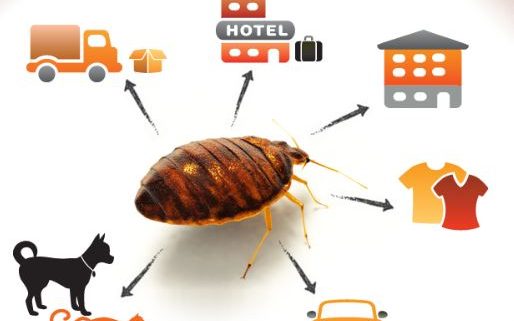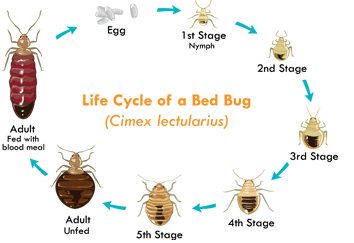Professional Kings Pest Control Cincinnati: Your Trusted Exterminators
Professional Kings Pest Control Cincinnati: Your Trusted Exterminators
Blog Article
Types of Bug Control: Which Approach Is Right for Your Infestation?
When encountered with a bug invasion, the option of an ideal technique for parasite control is important in efficiently handling the situation. From chemical treatments to organic remedies, there exists a series of methods that can be used to deal with various types of pests. Each method includes its own collection of benefits and factors to consider, making the decision-making procedure a nuanced one. Recognizing the subtleties of each approach and examining their compatibility with the certain insect infestation at hand is essential for achieving lasting success in bug monitoring. By checking out the different sorts of pest control techniques available, people can make educated decisions customized to their distinct situations, making sure a more reliable and sustainable result in insect removal.
Chemical Bug Control
Chemical bug control involves the use of artificial or normally obtained chemicals to take care of and get rid of pest populaces successfully. This method is typically made use of in farming, forestry, and residential setups to deal with a vast array of insects, consisting of rodents, weeds, and pests. Making use of chemical pesticides can provide fast and targeted services to pest invasions, making it a preferred option for many people and companies.
Among the crucial advantages of chemical insect control is its capacity to quickly get rid of insects, lowering the risk of damage to crops, residential or commercial property, and human health and wellness. By utilizing certain chemicals that target specific bugs, this technique can efficiently regulate infestations while decreasing injury to beneficial organisms and the atmosphere when used correctly.
Nonetheless, making use of chemical bug control likewise elevates problems about possible unfavorable results on non-target types, water sources, and human wellness. It is crucial to adhere to safety guidelines, apply chemicals sensibly, and consider different parasite control techniques to decrease these dangers and guarantee lasting insect administration methods.
Biological Parasite Control
Biological bug control, also understood as biocontrol, uses living organisms to manage and reduce insect populations normally. This technique harnesses the power of nature to regulate bugs without the need for artificial chemicals. Biocontrol can include the introduction of all-natural opponents of the pest varieties, such as pathogens, killers, or parasites, to subdue bug populations. By utilizing the insect's all-natural predators or virus, biological parasite control provides a sustainable and eco pleasant service to pest monitoring.

Mechanical Parasite Control
Making use of physical and hand-operated methods to manage parasite populaces, mechanical insect control provides an alternative approach that does not count on making use of living organisms or synthetic chemicals. This approach Kings pest control Cincinnati Ohio includes making use of obstacles, catches, or other devices to literally prevent or eliminate bugs. By blocking parasite entrance points or establishing up traps to capture them, mechanical bug control can efficiently reduce problems without introducing chemicals right into the atmosphere.
One common instance of mechanical pest control is the usage of mesh displays on doors and windows to avoid pests from going into structures. This basic yet effective technique acts as a physical obstacle, keeping bugs out while allowing for correct ventilation. Furthermore, devices like mousetraps, fly swatters, and ultrasonic repellents fall under the mechanical parasite control classification.
While mechanical parasite control methods can be labor-intensive and call for regular surveillance and maintenance, they use a ecologically friendly and lasting remedy for handling parasite infestations. By incorporating various mechanical strategies, residential or commercial property owners can produce a detailed insect control approach that minimizes reliance on chemical pesticides.
Physical Parasite Control

Some typical physical insect control methods consist of using barriers such as displays or internet to avoid bug entrance, traps to record and eliminate insects, and hand-picking to literally get rid of bugs from plants or structures. In addition, strategies like warm treatments can be made use of to regulate insects like bed insects by increasing the temperature to degrees that are deadly to the insects.
Physical pest control is specifically helpful in integrated parasite monitoring (IPM) methods, where several insect control approaches are incorporated for reliable insect administration while minimizing the usage of chemicals. By using physical pest control strategies, individuals can efficiently address bug infestations with very little environmental influence.
Integrated Insect Monitoring
When carrying out physical insect control methods as component of parasite management methods, Integrated Pest Monitoring (IPM) becomes a comprehensive technique that leverages different strategies to efficiently regulate pest populaces. IPM concentrates on lasting prevention of insects via a combination of organic, social, physical, and chemical tools tailored to details pest problems. By incorporating multiple control strategies, IPM intends to minimize the dangers connected with pests while also minimizing dependence on chemical solutions.
One key aspect of IPM is the emphasis on monitoring and examining pest populaces to determine the most suitable control techniques. This positive technique permits very early treatment and targeted methods, causing extra reliable parasite monitoring. In addition, IPM advertises eco pleasant methods by prioritizing non-chemical control techniques and just utilizing chemicals as a last hope.
Conclusion

By making use of the pest's natural predators or microorganisms, biological bug control supplies a environmentally friendly and sustainable option to pest monitoring. - Kings pest control Cincinnati Ohio
Using physical and hand-operated techniques to handle bug populaces, mechanical bug control uses an alternate strategy that does not count on the use of living organisms or artificial chemicals.An efficient strategy to taking care of insect populations without relying on chemical or organic approaches includes the use of physical insect control techniques.When implementing physical pest control approaches as component of bug administration techniques, Integrated Pest Monitoring (IPM) arises as an extensive approach that leverages numerous strategies to efficiently control pest populaces. Chemical bug control involves the usage of chemicals, biological parasite control uses natural killers, mechanical bug control includes physical obstacles, physical bug control includes capturing or eliminating pests, and incorporated insect monitoring integrates multiple approaches for an alternative strategy to pest control.
Report this page